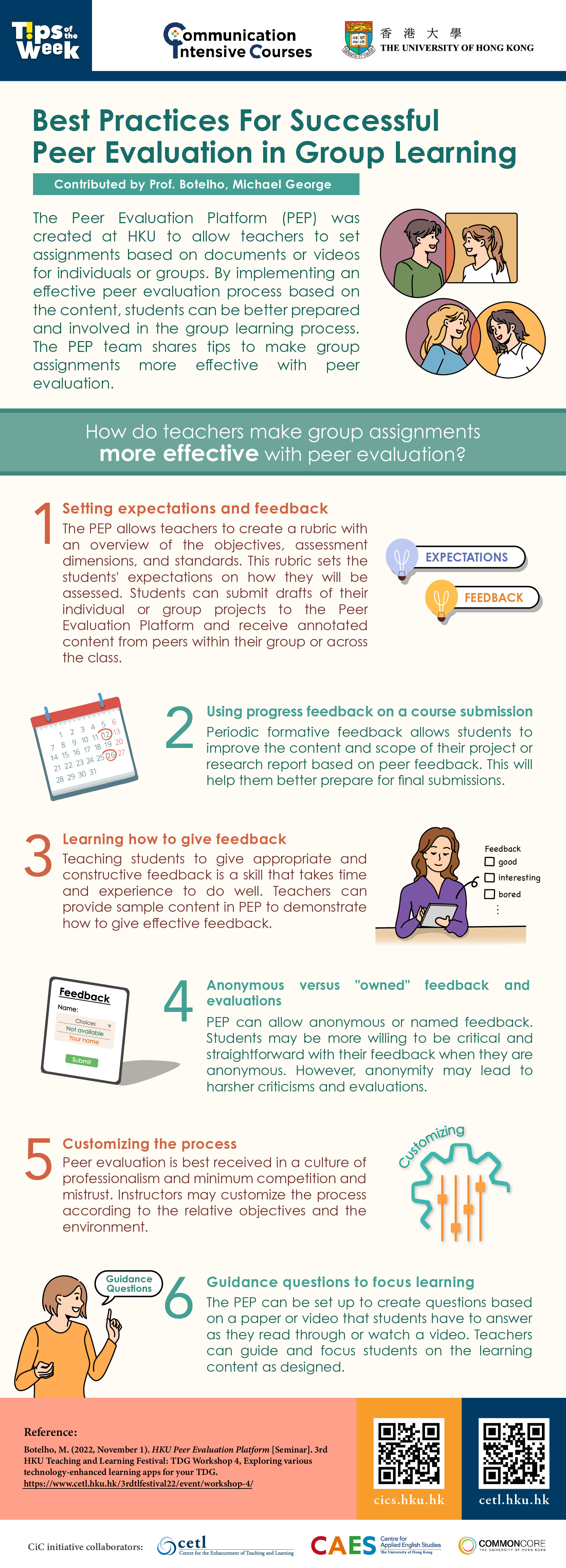
Contributed by Prof. Botelho, Michael George
The Peer Evaluation Platform (PEP) was created at HKU to allow teachers to set assignments based on documents or videos for individuals or groups. By implementing an effective peer evaluation process based on the content, students can be better prepared and involved in the group learning process. The PEP team shares tips to make group assignments more effective with peer evaluation.
How do teachers make group assignments more effective with peer evaluation?
- Setting expectations and feedback
The PEP allows teachers to create a rubric with an overview of the objectives, assessment dimensions, and standards. This rubric sets the students’ expectations on how they will be assessed. Students can submit drafts of their individual or group projects to the Peer Evaluation Platform and receive annotated content from peers within their group or across the class. - Using progress feedback on a course submission
Periodic formative feedback allows students to improve the content and scope of their project or research report based on peer feedback. This will help them better prepare for final submissions. - Learning how to give feedback
Teaching students to give appropriate and constructive feedback is a skill that takes time and experience to do well. Teachers can provide sample content in PEP to demonstrate how to give effective feedback. - Anonymous versus “owned” feedback and evaluations
PEP can allow anonymous or named feedback. Students may be more willing to be critical and straightforward with their feedback when they are anonymous. However, anonymity may lead to harsher criticisms and evaluations. - Customizing the process
Peer evaluation is best received in a culture of professionalism and minimum competition and mistrust. Instructors may customize the process according to the relative objectives and the environment. - Guidance questions to focus learning
The PEP can be set up to create questions based on a paper or video that students have to answer as they read through or watch a video. Teachers can guide and focus students on the learning content as designed.
References:
- Botelho, M. (2022, November 1). HKU Peer Evaluation Platform [Seminar]. 3rd HKU Teaching and Learning Festival: TDG Workshop 4, Exploring various technology-enhanced learning apps for your TDG. https://er.talic.hku.hk/3rdtlfestival22/event/workshop-4/



